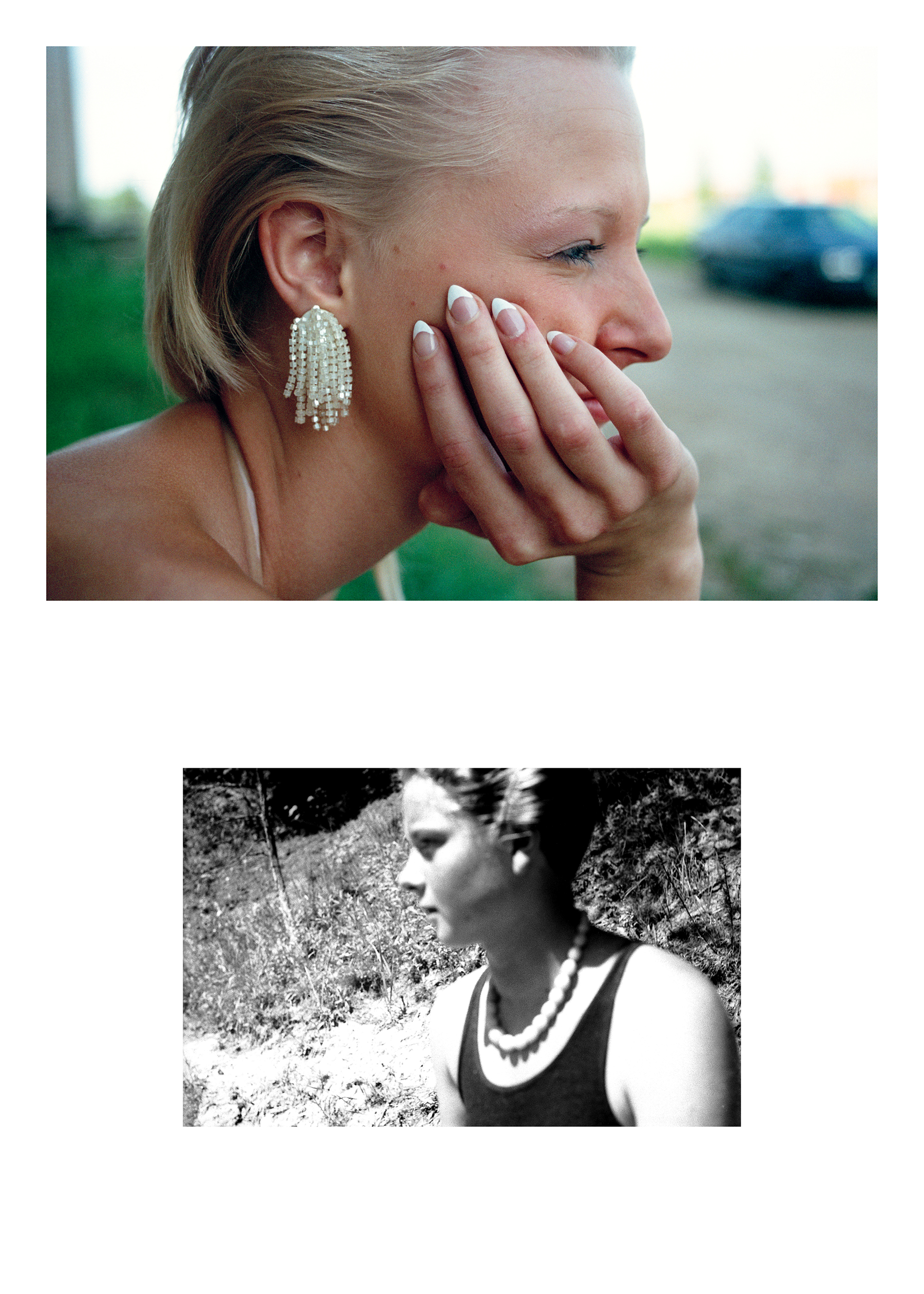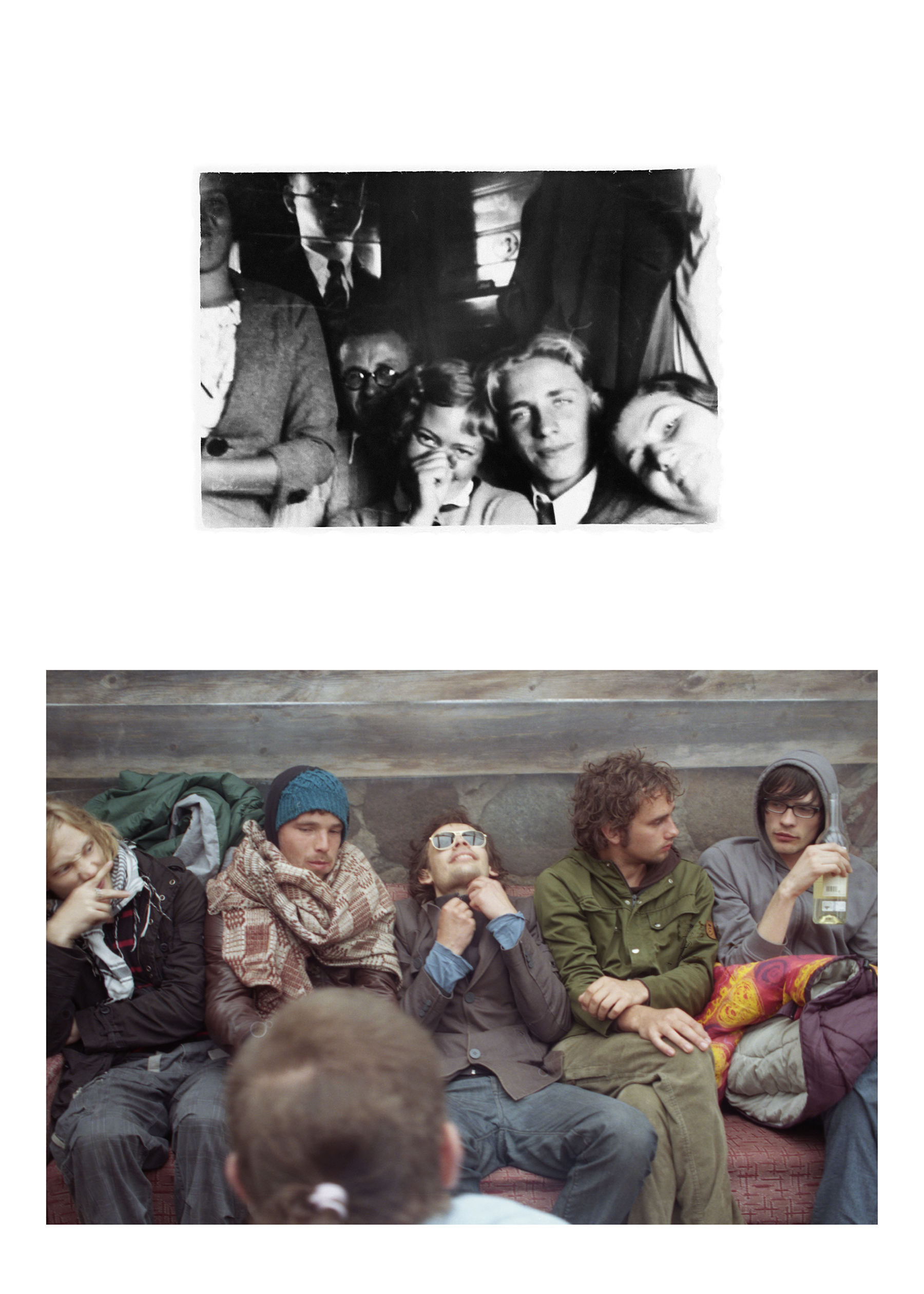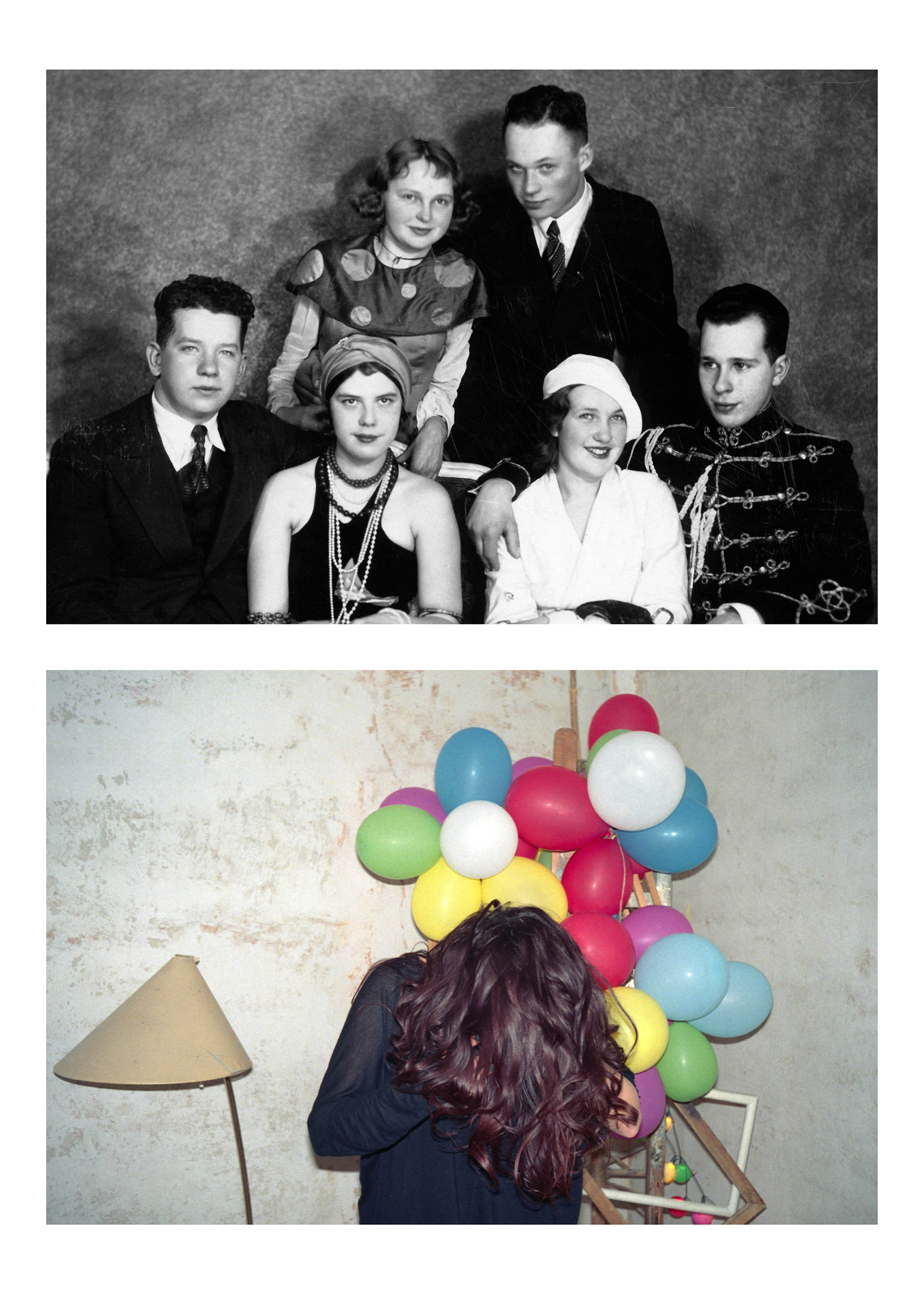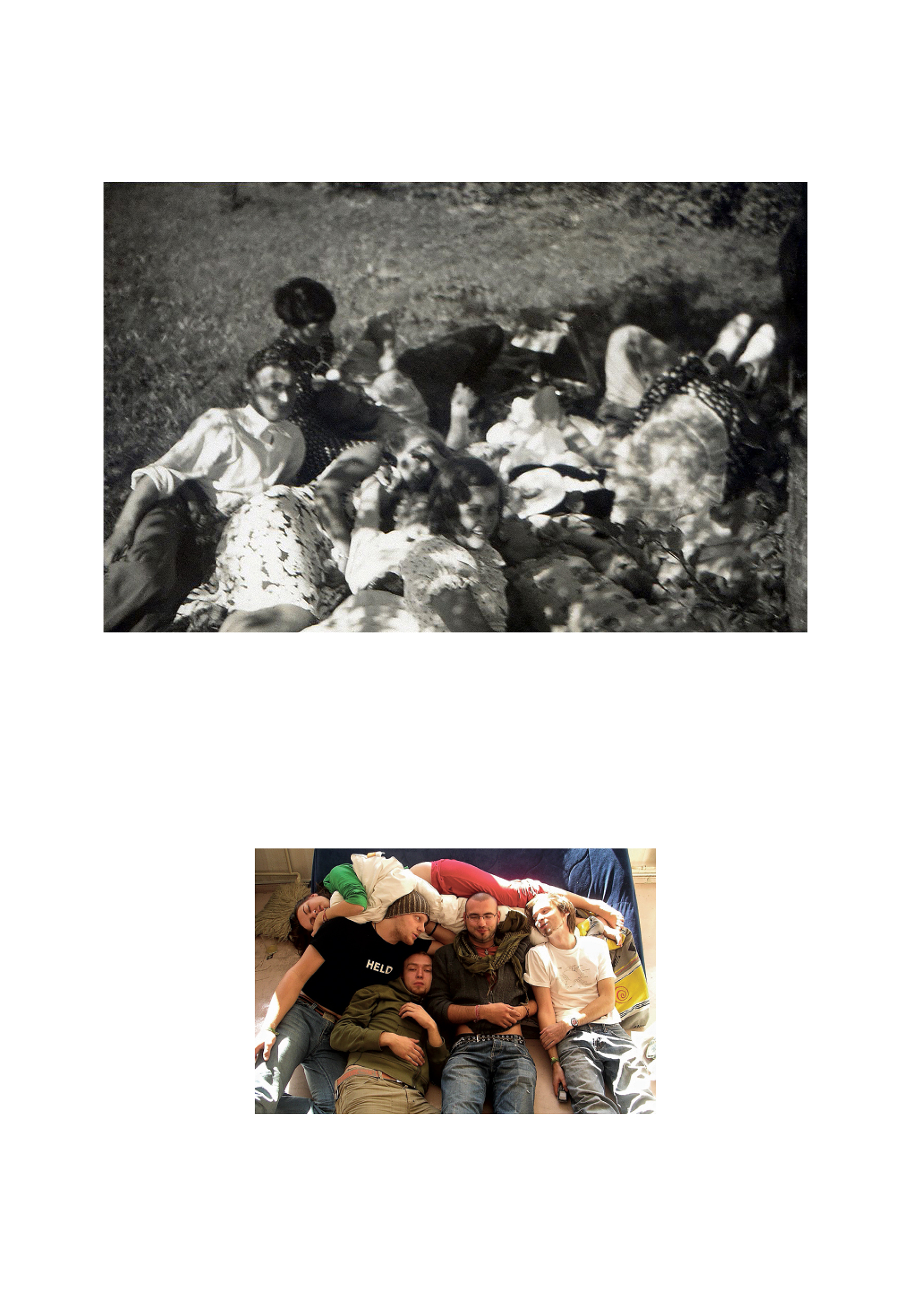Before the War / Pirms Kara
Solo exhibition
May 2020 until the first frost
Laimes Muzejs, Indra, Latvia










Before the War combines pictures from family archives and personal albums with recent images, all taken in Latvia, across 100 years. Many of the images from the 1900s included in the exhibition were taken in Latgale by my grandfather Edgars while he participated in the tourism initiative Apceļo Dzimteni initiated by president Karlis Ulmanis to foster Latvian nationalism. The images from the 2000s were taken by me during my own familiarization with Latvia, when I lived here to learn about my fatherland for myself, independent from the stories of my grandparents.
I knew my grandparents as they were after the war; hardened and serious. Unearthing these photographs of Edgars and his friends in the 1930s—before he was deported to a Gulag labour camp and separated from his family for 36 years—showed me a carefree side of him I never saw. I was taken by how much the images reminded me of the pictures I took of my own friends during a free-spirited period in Latvia between joining the European Union in 2004 and the economic crisis of 2008. Today, Canadian NATO troops lead a deterrence mission in Latvia in a move to protect the region from a war that will hopefully never happen, referenced in the two photographs of recent military training included in the series.
No matter what the future brings, these images capture the joy of youth that is only possible without fear in the periphery, recording the subjects before they are forever changed by the hardships of life.
///
Sērija “Pirms kara” apvieno fotogrāfijas no manas ģimenes arhīva ar savejām – visi attēli uzņemti Latvijā pēdējo 100 gadu laikā. Daudzas šajā izstādē apskatāmās fotogrāfijas no 20.gs. sākuma uzņēma mans vectēvs Edgars, kad viņš apceļoja Latgali, piedaloties prezidenta Kārļa Ulmaņa iedibinātajā iniciatīvā “Apceļo dzimteni”, kuras mērķis bija veicināt latviešu nacionālismu. Attēlus no 21.gs. sākuma uzņēmu es, kamēr pati mēģināju iepazīt manu tēvu zemi Latviju neatkarīgi no manu vecvecāku stāstītā.
Es pazinu manus vecvecākus tādus, kādi viņi kļuva pēc kara – sīkstus un nopietnus. Apskatot Edgara un viņa draugu fotogrāfijas no trīsdesmitajiem gadiem, – pirms viņu izsūtīja uz gulagu un nošķīra no ģimenes uz 36 gadiem – man atklājās bezrūpīga viņa personības puse, kuru agrāk nebiju piedzīvojusi. Mani pārsteidza tas, cik ļoti šie attēli man atgādināja manis pašas uzņemtās draugu fotogrāfijas no jauneklīgā gara pārpilnā dzīves posma starp Latvijas iestāšanos Eiropas Savienībā 2004. gadā un ekonomisko krīzi 2008. gadā. Pašlaik Kanādas NATO spēku karavīri atrodas misijā Latvijā, lai aizsargātu šo reģionu no kara, kas, cerams, nekad nenotiks un uz kuru šajā sērijā atsaucas divi attēli no nesenajām militārajām mācībām.
Lai ko solītu nākotne, šīs fotogrāfijas iemūžina jaunības laimi, kas iespējama no bailēm brīvā pasaulē, notverot brīdi, pirms personāžus uz visiem laikiem izmainījušas dzīves grūtības.
Zīle Liepiņa, aprīlis 2020. Tulkoja Andris Kuprišs.
I knew my grandparents as they were after the war; hardened and serious. Unearthing these photographs of Edgars and his friends in the 1930s—before he was deported to a Gulag labour camp and separated from his family for 36 years—showed me a carefree side of him I never saw. I was taken by how much the images reminded me of the pictures I took of my own friends during a free-spirited period in Latvia between joining the European Union in 2004 and the economic crisis of 2008. Today, Canadian NATO troops lead a deterrence mission in Latvia in a move to protect the region from a war that will hopefully never happen, referenced in the two photographs of recent military training included in the series.
No matter what the future brings, these images capture the joy of youth that is only possible without fear in the periphery, recording the subjects before they are forever changed by the hardships of life.
///
Sērija “Pirms kara” apvieno fotogrāfijas no manas ģimenes arhīva ar savejām – visi attēli uzņemti Latvijā pēdējo 100 gadu laikā. Daudzas šajā izstādē apskatāmās fotogrāfijas no 20.gs. sākuma uzņēma mans vectēvs Edgars, kad viņš apceļoja Latgali, piedaloties prezidenta Kārļa Ulmaņa iedibinātajā iniciatīvā “Apceļo dzimteni”, kuras mērķis bija veicināt latviešu nacionālismu. Attēlus no 21.gs. sākuma uzņēmu es, kamēr pati mēģināju iepazīt manu tēvu zemi Latviju neatkarīgi no manu vecvecāku stāstītā.
Es pazinu manus vecvecākus tādus, kādi viņi kļuva pēc kara – sīkstus un nopietnus. Apskatot Edgara un viņa draugu fotogrāfijas no trīsdesmitajiem gadiem, – pirms viņu izsūtīja uz gulagu un nošķīra no ģimenes uz 36 gadiem – man atklājās bezrūpīga viņa personības puse, kuru agrāk nebiju piedzīvojusi. Mani pārsteidza tas, cik ļoti šie attēli man atgādināja manis pašas uzņemtās draugu fotogrāfijas no jauneklīgā gara pārpilnā dzīves posma starp Latvijas iestāšanos Eiropas Savienībā 2004. gadā un ekonomisko krīzi 2008. gadā. Pašlaik Kanādas NATO spēku karavīri atrodas misijā Latvijā, lai aizsargātu šo reģionu no kara, kas, cerams, nekad nenotiks un uz kuru šajā sērijā atsaucas divi attēli no nesenajām militārajām mācībām.
Lai ko solītu nākotne, šīs fotogrāfijas iemūžina jaunības laimi, kas iespējama no bailēm brīvā pasaulē, notverot brīdi, pirms personāžus uz visiem laikiem izmainījušas dzīves grūtības.
Zīle Liepiņa, aprīlis 2020. Tulkoja Andris Kuprišs.
Edgars spent 1950—1956 in Karlaga, a Gulag forced labour camp in Karaganda, Kazakhstan. He described his experience in the Daugavas Vanagi monthly publication in April 1977:
“Among the deported Lithuanians was a former teacher named Radžius, who I chatted with sometimes. I noticed that he liked to read the palms of his “fate mates”. Once I asked him to read my palm, too. Radžius confessed that he actually had no knowledge of what palm lines indicated, but he noticed that the prisoners were receptive to being told something good, something that created even a small ray of hope. In this way he succeeded in discouraging the odd inmate from suicidal thoughts, cheering them up so they didn't give in to despair.
Radžius suggested I also do palm readings, encouraging me to always give a positive reading. Although this seemed a bit peculiar to me, I tried it. For at least one former Latvian officer, I believe that I succeeded in brightening his last days in this world, because I “foretold” him hope to return home. Strange—by telling others good news and trying to maintain their hope to escape from this hell, I too started believing that maybe I would get out alive and see my relatives again. It gave me strength to endure.”
“Among the deported Lithuanians was a former teacher named Radžius, who I chatted with sometimes. I noticed that he liked to read the palms of his “fate mates”. Once I asked him to read my palm, too. Radžius confessed that he actually had no knowledge of what palm lines indicated, but he noticed that the prisoners were receptive to being told something good, something that created even a small ray of hope. In this way he succeeded in discouraging the odd inmate from suicidal thoughts, cheering them up so they didn't give in to despair.
Radžius suggested I also do palm readings, encouraging me to always give a positive reading. Although this seemed a bit peculiar to me, I tried it. For at least one former Latvian officer, I believe that I succeeded in brightening his last days in this world, because I “foretold” him hope to return home. Strange—by telling others good news and trying to maintain their hope to escape from this hell, I too started believing that maybe I would get out alive and see my relatives again. It gave me strength to endure.”
Edgars Karlagā (Gulagu spaidu nometne Karagandā, Kazakstānā) pavadīja 6 gadus no 1950. līdz 1956. gadam. Pieredzēto viņš aprakstīja Daugavas Vanagu mēnešraksta 1977. gada 4. numurā:
“Izsūtīto lietuviešu starpā bija kāds bijušais skolotājs Radžius, ar ko paretam parunājos. Ievēroju, ka viņš saviem likteņa biedriem labprāt zīlē pēc rokas līnijām. Reiz prasiju, lai pazīlē arī man. Radžius atzinās, ka viņam neesot patiesībā ne mazāko zināšanu, ko rokas līnijas norādot, bet viņš novērojis, ka ieslodzīties labprāt grib dzirdēt kaut ko labu pastāstot, kaut ko tādu, kas tiem radot kaut mazu cerību stariņu. Tā viņam izdevies vienu otru atrunāt no pašnāvības domām, uzmundrināt nepadoties izmisumam.
Radžius man arī ieteica zīlēt pēc rokas līnijām, ieteicot vienmēr teikt tikai pozitīvu izskaidrojumu. Kaut arī man tas likās mazliet savādi, tomēr izmēģināju. Liekas, kas vismaz vienam bijušam latviešu virsniekam man tādā veidā izdevās atvieglināt viņa pēdējās dienas šai pasaulē, jo “izzīlēju” viņam cerību atgriezties dzimtenē. Savādi – stāstot citiem labas ziņas un mēģinot uzturēt cerību izglābties no šīs elles, arī pats sāku ticēt, ka varbūt dzīvs izkļūšu ārā un redzēšu vēl tuviniekus. Tas man deva spēku izturēt.”
“Izsūtīto lietuviešu starpā bija kāds bijušais skolotājs Radžius, ar ko paretam parunājos. Ievēroju, ka viņš saviem likteņa biedriem labprāt zīlē pēc rokas līnijām. Reiz prasiju, lai pazīlē arī man. Radžius atzinās, ka viņam neesot patiesībā ne mazāko zināšanu, ko rokas līnijas norādot, bet viņš novērojis, ka ieslodzīties labprāt grib dzirdēt kaut ko labu pastāstot, kaut ko tādu, kas tiem radot kaut mazu cerību stariņu. Tā viņam izdevies vienu otru atrunāt no pašnāvības domām, uzmundrināt nepadoties izmisumam.
Radžius man arī ieteica zīlēt pēc rokas līnijām, ieteicot vienmēr teikt tikai pozitīvu izskaidrojumu. Kaut arī man tas likās mazliet savādi, tomēr izmēģināju. Liekas, kas vismaz vienam bijušam latviešu virsniekam man tādā veidā izdevās atvieglināt viņa pēdējās dienas šai pasaulē, jo “izzīlēju” viņam cerību atgriezties dzimtenē. Savādi – stāstot citiem labas ziņas un mēģinot uzturēt cerību izglābties no šīs elles, arī pats sāku ticēt, ka varbūt dzīvs izkļūšu ārā un redzēšu vēl tuviniekus. Tas man deva spēku izturēt.”
